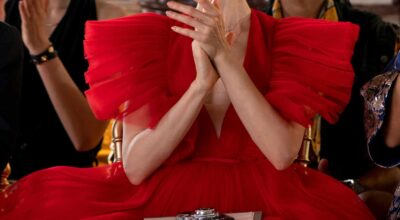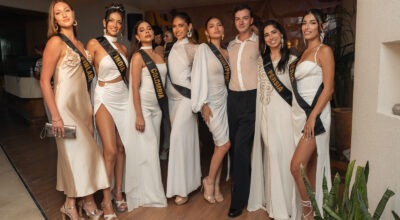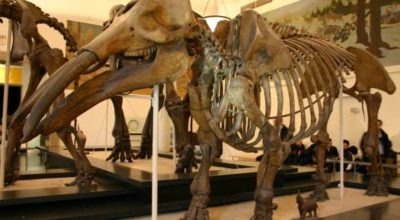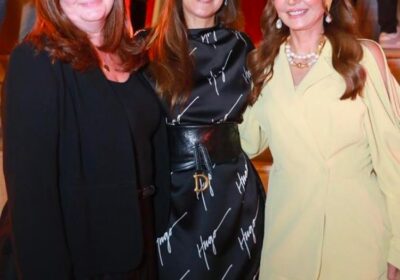From Youssef Chahine’s ‘Al Mohager’ and ‘Destiny’ to Marwan Hamed’s ‘Ibrahim Labyad’ and ‘The Blue Elephant’, Nahed Nasrallah’s critically acclaimed work as a costume designer has helped bring some of the most popular characters in Egyptian cinema to life for decades. We met her during El Gouna Film Festival 2019 and had the chance to sit down with her and go through the unexpected journey of her work life.

A picture of Nahed Nasrallah via IMDB’s entry for The Crew (2008)
Venturing Into the World of Cinema
“A friend of mine was working on a film that revolved around women and their sexuality. He was the Syrian director Omar Amir El Ein – may God have mercy upon him,” she recalled. It was the 80s and Nasrallah hadn’t considered a career in cinema by that time, but she strongly believed in the film’s subject. And she was very much interested in political and social issues in general. “After all, I belong to the generation that gave birth to the student movement of the seventies,” she elaborated.

Nahed Nasrallah and Youssef Chahine worked together for the first time on Adieu Bonaparte (1985)
She recalls how the Syrian director warned her back then that being an assistant director is not a nine to five job like the ones she undertook. But that didn’t stop her from accepting his invitation onto the film crew and quitting her rather more stable and defined job. “I majored in political science during college and I had worked in more traditional jobs in the fields of tourism, travel and ticketing. It never crossed my mind that I would become a costume designer – ever!”‘
Opting for Costume Design
After her entry into the filmmaking scene as an assistant director through a friend, things started happening in Nasrallah’s career almost immediately: she joined Chahine’s ‘Adieu Bonaparte’ (1985). “I was the 100th assistant director,” she exaggerated jokingly. “I was responsible for casting alongside Mr. Zaki Fateen Abdel Wahab. I am fluent in French and so I could communicate to the film’s costume designer [Yvonne Sassinot de Nesle],” she clarified.

A snapshot from Youssef Chahine’s Al Yawm Al Sadis (1986).
According to Nasrallah – when Chahine moved onto Al Yawm Al Sadis (1986), his production couldn’t offer Nesle but a month’s fees, due to budgetary issues. In turn, Nesle agreed but under one condition, that Nasrallah is hired as her assistant. And that’s what actually happened. “I was furious,” expressed Nasrallah. Costume design was never on her wish list even after working in film for a while. “She [Nesle] was not present on-set all the time and – subsequently – I acted as a co-designer.”
“After ‘Al Yawm Al Sadis’, I decided that I can’t completely free myself up for a profession in the industry without trying myself out at the numerous jobs within it. I tried myself at post-production, and even directing. And I finally settled on costume design,” she wistfully remembered. After landing on becoming a costume designer, she traveled to Paris for a year to study fashion drawing and illustration for a year. “And any other knowledge or skills I need to master the craft, I learned on my own or on the job.”

‘Ibrahim Labyad’ (2009) is among Nahed Nasrallah’s more contemporary work with the director Marwan Hamed.
The Importance of Understanding Humans

A snapshot of Hend Sabri from Marwan Hamed’s ‘The Blue Elephant 2’(2018), displays Nasrallah’s most recent and popular released works.
To Nasrallah, viewing the profession of costume design as devoid of intellectual endeavors and centered on making things look aesthetically pleasing is merely a misconception. The former political science graduate with a vested interest in what’s going on around her in society found herself gradually required to understand humans on so many levels to truly do her job. And looking at the iconic characters she brought to life with her designs – from Amr Waked’s character in ‘Ibrahim Labyad’ to Hend Sabry’s character in ‘The Blue Elephant 2’ – her diverse work has been acknowledged for its display of an impressive amount of scrutiny, knowledge and attention to detail.
“If you’re not passionately interested in understanding humans in general, you won’t be good at this job. You will be superficial,” she emphasized. “My job is not to make people look prettier or more aesthetically pleasant. It depends on the story we’re telling. The essential thing is to put a costume in the character’s body that helps tell that story and tells us something about their state at different points in the drama.”




























